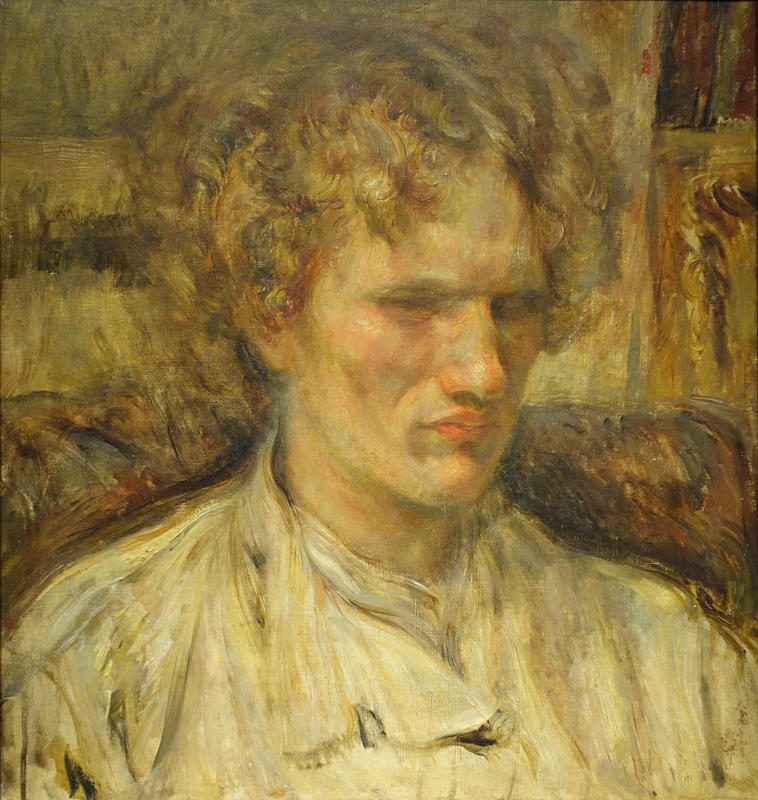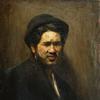More about Portrait of Vasilii Yaroshenko

Contributor
Nakamura Tsune was inspired by big names like Rembrandt, Cézanne, and Renoir, but his most iconic muse was a Russian Esperantist who got his kicks dog sledding in the Chukchi Peninsula.
Vasili Eroshenko wasn’t just a celebrated author with a fondness for eastern Siberia. After a childhood bout of the measles, the poet was left permanently blind. Despite the limitations of his time period, our dashing young scholar would travel the world through a network of intellectuals and Esperantists. Don’t be fooled by the dour face on Nakamura’s portrait; Eroshenko had a thrill-seeking side. When Vasili tired of composing texts in Japanese and Esperanto, he turned to his more wild interests, which included massage, socialism, and dog sledding in the Siberian tundra. Despite his hunting prowess, Eroshenko was once lost in a blizzard. After a pup saved him from a chilly end, Eroshenko turned his misadventure into a new book, From the Life of the Chukchis.
Eroshenko’s genius was boundless, leading him to master the violin- aided by his perfect pitch- and at least ten European languages. Unfortunately, Eroshenko’s talents (and anarchist inclinations) made him stand out, and his travels were interrupted by a series of arrests and deportations. In India, Vasili was arrested as a suspected German spy. After running from house arrest, our charming protagonist was deported for his Bolshevik sympathies. Again Eroshenko escaped, crossing from Shanghai to his native Russia, eager to return home during the revolution.
Despite his constant travels and sporadic disappearances, Eroshenko fostered a lasting friendship with feminist journalist Kamichika Ichiko. Eroshenko’s feelings for his fellow writer may have been romantic, but any such affections were unrequited due to Kamichika’s rocky relationship with anarchist and free love advocate Ōsugi Sakae. Unfortunately, this pairing was ill-fated; Kamichika stabbed Ōsugi in 1916, landing herself a two year stint in prison and a representation in the 1969 movie Eros plus Massacre. Eroshenko visited his companion in prison, unphased by her brief love affair with impalement.
Sources
- B.K. “Nakamura Tsune Retrospective: An Artist of Love and Passion.” Aichi Arts Center. Accessed March 31, 2018. http://www.aac.pref.aichi.jp/english/aac/aac39-e/aac39-3-2.html.
- Julija Patlanj. “The Life and Desire of Vasilye Eroshenko.” Window to Japan. 2003. Accessed March 31, 2018. http://ru-jp.org/patlan01.htm.
- Patlanj, Julia. “Vasilii Yakovlevich Eroshenko.” Kontakto Magazine. (March 2005). Accessed March 31, 2018. https://docgo.net/philosophy-of-money.html?utm_source=vasilii-yakovlevi….
- “Vasili Eroshenko.” Wikipedia. January 20, 2018. Accessed March 31, 2018. https://en.wikipedia.org/wiki/Vasili_Eroshenko.











